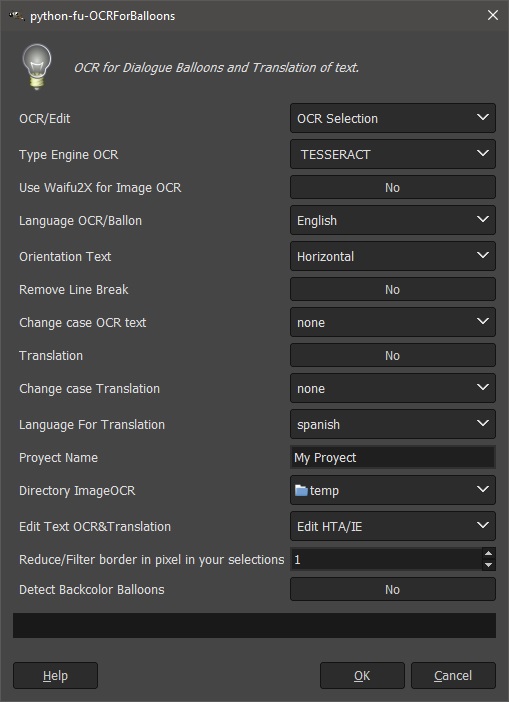| Welcome, Guest |
You have to register before you can post on our site.
|
| Latest Threads |
Cropping Image
Forum: General questions
Last Post: rinaldop
Yesterday, 01:17 PM
» Replies: 4
» Views: 160
|
Too many fonts - where ar...
Forum: General questions
Last Post: rich2005
Yesterday, 09:45 AM
» Replies: 1
» Views: 120
|
Alivecolors
Forum: Other graphics software
Last Post: denzjos
Yesterday, 08:27 AM
» Replies: 0
» Views: 75
|
gimp 3 and 8bf files
Forum: Extending the GIMP
Last Post: denzjos
12-24-2025, 02:03 PM
» Replies: 0
» Views: 93
|
Preferences/Folders shows...
Forum: Gimp 2.99 & Gimp 3.0
Last Post: programmer_ceds
12-24-2025, 10:08 AM
» Replies: 5
» Views: 3,037
|
Problems with AppImages.
Forum: Installation and usage
Last Post: teapot
12-23-2025, 07:45 PM
» Replies: 2
» Views: 348
|
Why am'I fighting with GI...
Forum: Linux and other Unixen
Last Post: NetWeeZurd
12-23-2025, 01:44 AM
» Replies: 2
» Views: 201
|
Can tooltip display time ...
Forum: Gimp 2.99 & Gimp 3.0
Last Post: NetWeeZurd
12-23-2025, 01:40 AM
» Replies: 4
» Views: 1,323
|
Problem posting an update...
Forum: Gimp-Forum.net
Last Post: Scallact
12-21-2025, 10:19 PM
» Replies: 19
» Views: 1,034
|
Paint bucket acts "weird"
Forum: General questions
Last Post: PieterJW
12-21-2025, 06:59 PM
» Replies: 7
» Views: 488
|
|
|
| Custom Window Title for Folder Selection |
|
Posted by: radzo73 - 06-09-2020, 09:36 PM - Forum: Scripting questions
- Replies (5)
|
 |
Hey,
In my GIMP 2.8.22 script (because cropping in 2.10 sucks), I've registered a PF_DIRNAME as (PF_DIRNAME, "file_inpath", "Input Image Folder", "/tmp"), and unlike a PF_FILE, where the window title is "[title] - [PF_FILE name]", it shows "Python-Fu Folder Selection". Is there a way to change the window title so that it's just "[the PF_DIRNAME folder name]"?
With hope,
radzo73
|

|
|
| Script OCR Image (Tesseract OCR engine ) |
|
Posted by: SnakerWolf - 06-08-2020, 04:42 AM - Forum: Extending the GIMP
- Replies (7)
|
 |
Script for OCR text (Balloon Text)
This script allows you to perform text recognition of the text balloons of an image, it also allows you to translate the text using Google Translator.
It can be translated from any language, Japanese, Korean, Chinese to English, Spanish. Russian.
Use the Engine Tesseract (CaptureText), to recognize the text.
It can be used for multiple images at once,

Videos Youtube
https://youtu.be/sASVPqiOojo
Only Scripts
 OCRForBalloonsText Only Scripts.zip (Size: 85.54 KB / Downloads: 1408)
OCRForBalloonsText Only Scripts.zip (Size: 85.54 KB / Downloads: 1408)
all Files necessary waifu2x,engine tesseract,tessdata, 86_Redistributable for Visual Studio 2015 (480 MB)
https://drive.google.com/file/d/1sBxH-lA...sp=sharing
Include other scripts
Script for change size, color the text.
Script for scale with Waifu2x
Script for create group layer
Script for save your selection as paths
Script for remove layers
|

|
|
| Paths tool multiple selections? |
|
Posted by: sl60 - 06-07-2020, 07:19 PM - Forum: General questions
- Replies (1)
|
 |
I never tried this before. What if, say, you construct a square with the paths tool, select it, and then decide to add a triangle to this shape and select this, too? I tried holding down SHIFT but that doesn't work. Any other ways?
|

|
|
|